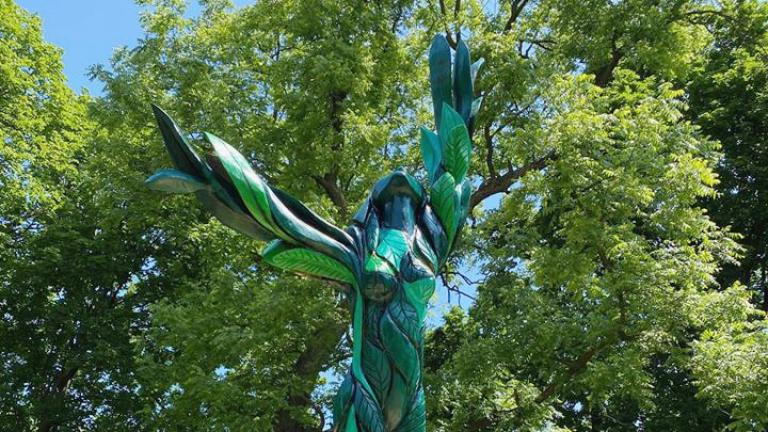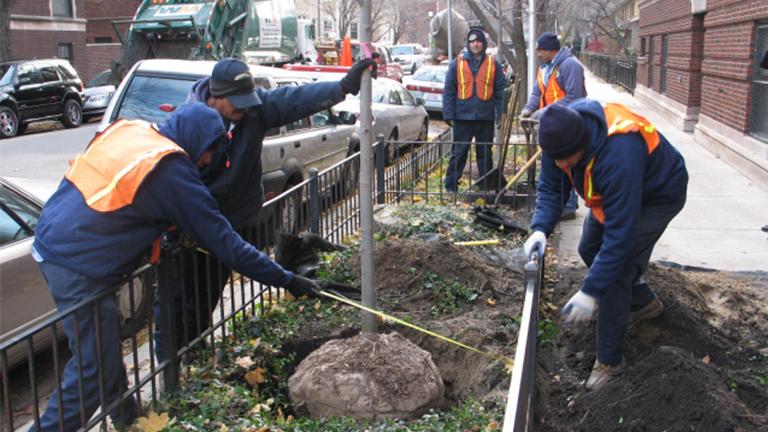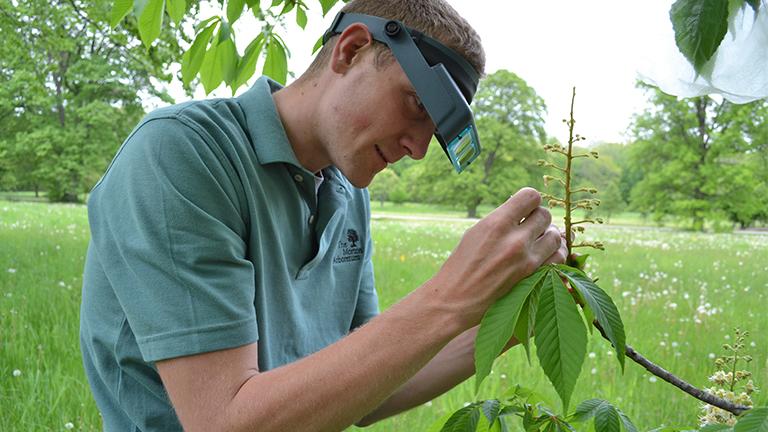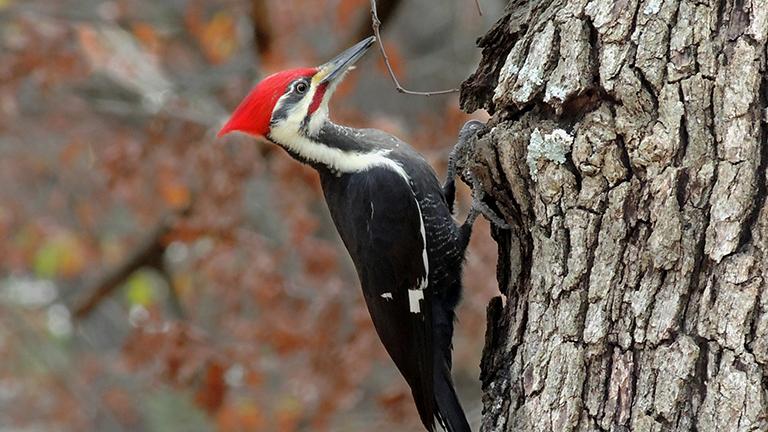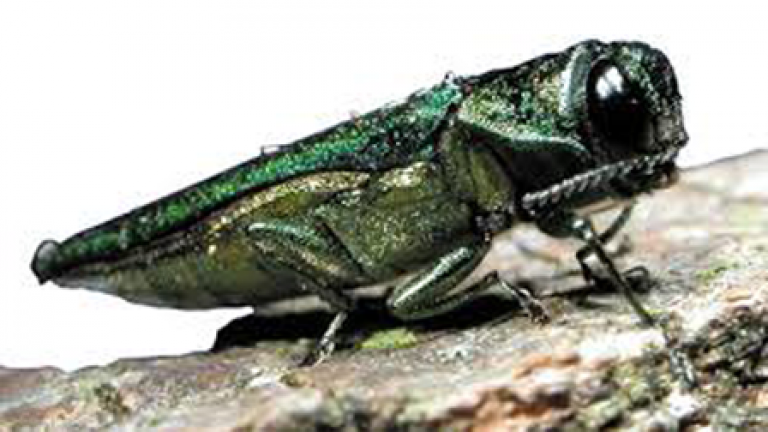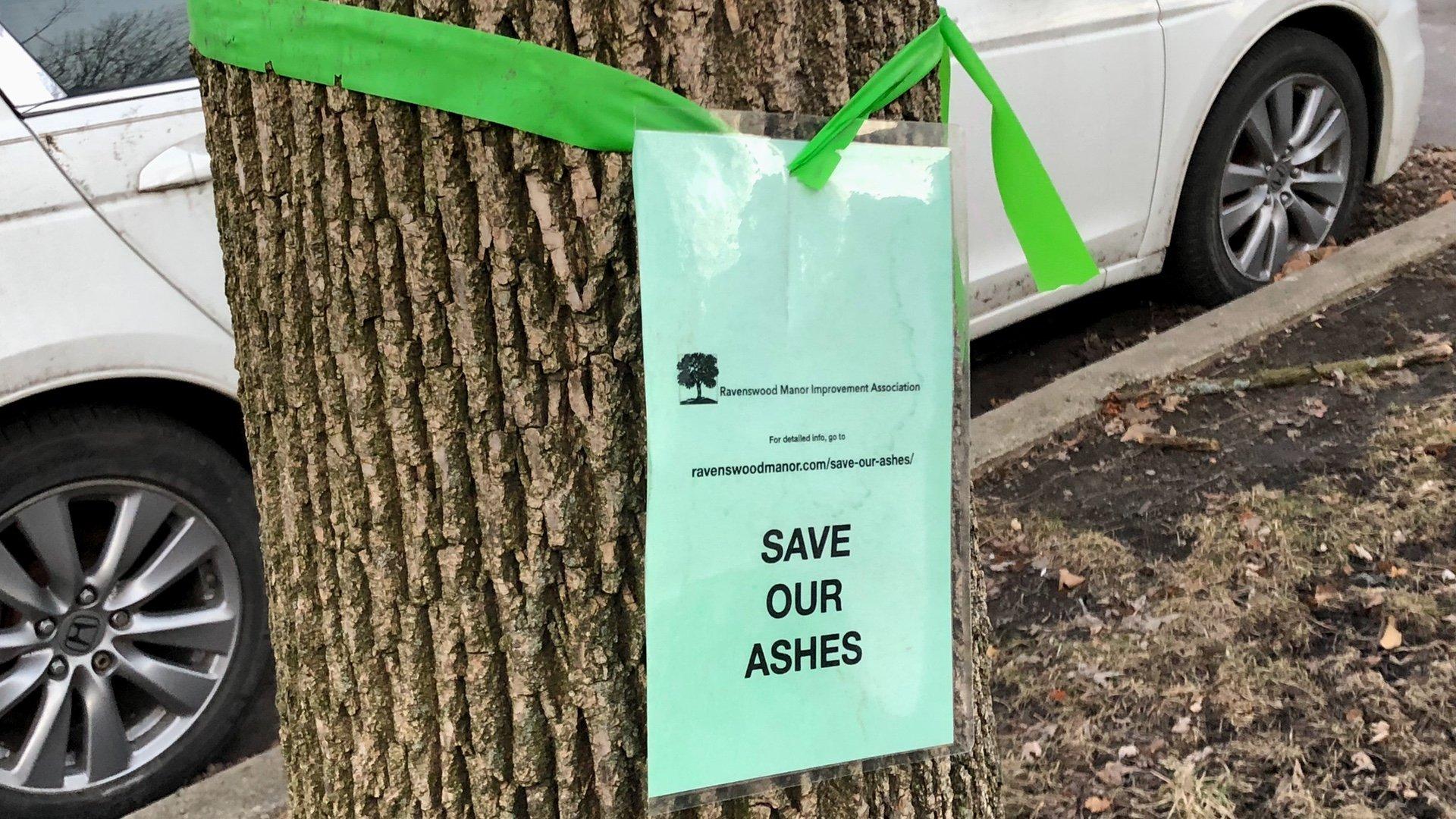 Several communities have raised funds to treat their neighborhood ash trees. (Patty Wetli / WTTW News)
Several communities have raised funds to treat their neighborhood ash trees. (Patty Wetli / WTTW News)
Chicago’s ash trees are at the center of a tug of war between a coalition of alderpeople intent on slowing the demise of the beleaguered trees versus members of Mayor Lori Lightfoot’s administration who say it’s time to concede defeat against the emerald ash borer pest.
During Thursday’s City Council meeting, Ald. Rossanna Rodriguez-Sanchez (33rd), Andre Vasquez (40th) and Matt Martin (47th) introduced a resolution calling for the Department of Streets and Sanitation to reinstate treatment of the city’s remaining parkway ash trees — numbering close to 50,000 — and also develop a systematic program for removing and replacing infested trees.
Ald. Anthony Beale (9th) attempted to block the resolution from moving forward, but the measure was ultimately sent to the budget committee, though there’s no guarantee it will receive a hearing or emerge for a full council vote.
Cole Stallard, the newly confirmed commissioner of the Department of Streets and Sanitation, had stated during recent budget hearings that the city would not revisit its plan to cease inoculation of parkway ash trees, citing the cost of the treatment.
But for Vasquez, the numbers provided by Streets and Sanitation didn’t add up.
The cost of inoculation — a treatment that lasts three years — is $120 per tree, totaling $6 million for the entire ash population. (The $6 million includes $4 million for labor and $2 million for the chemicals, according to Streets and Sanitation.)
To remove and replace all the remaining ash trees, at $1,500 per tree, would cost $75 million.
“I’d love an answer to that logic, because it doesn’t make sense to me,” said Vasquez.
As the resolution notes: “Ash tree inoculation could be fully funded for over 30 years and still be the more cost-effective option than the city’s current strategy of unmanaged die-offs.”
The difference of opinion is precisely the sort of debate the Urban Forestry Advisory Board was designed to mediate. Though the board’s creation was approved by City Council back in June, Lightfoot has yet to announce appointments to the board. A spokesperson for the mayor did not respond to a request for comment on a potential timeline.
A number of community organizations in North Side wards served by the resolution’s sponsoring alderpeople have stepped in to fill the gap left by Streets and Sanitation.
Staring at blocks full of mature parkway ash trees, the loss of which would leave significant holes in canopy cover, neighbors have raised funds to privately pay for ash borer inoculation. It’s a situation that could lead to even greater disparity in canopy coverage across Chicago, creating ash haves and ash have-nots in a city where some communities already have two to three times the canopy of others.
Less canopy cover — the upper layer of leaves, branches and stems that shelter the ground below — translates into less shade and poorer air quality.
Untreated ash also pose a hazard in terms of weakened limbs raining down onto streets, sidewalks and power lines. Given that it could take a decade or more for Streets and Sanitation to remove all the remaining ash trees, inoculating them is a matter of public safety, Vasquez argued.
If passed, and put into practice, the resolution would have Streets and San devise a systematic, two-pronged approach combining regular inoculation with the removal of the least healthy trees until the ash population is replaced.
Heather Cherone contributed to this report.
Contact Patty Wetli: @pattywetli | (773) 509-5623 | [email protected]


